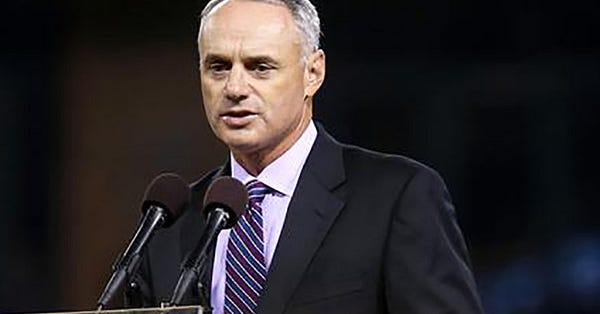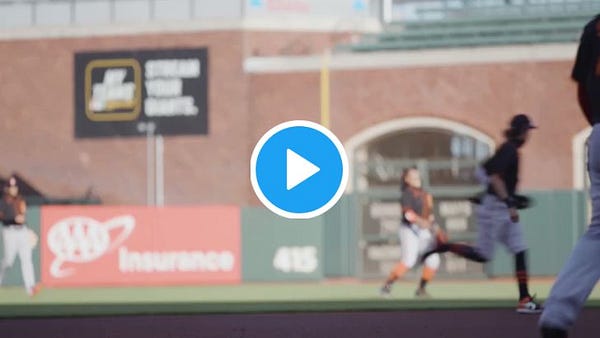Hey, we had so much fun playing “Swing/Take” on Friday that the masses are calling for more (Read: I took more notes and want to put them to use, dangit!). So let’s play it again! This time with a teammate of Bishop’s who matches him pretty well tool for tool.
Hey Alex Canario — let’s play:
Swing…

…or Take

I’ll refer you back to Friday’s post for the origin story behind this and my process in determining these numbers. But before I jump in, I do want to give a shoutout to good Twitter friend GPT for attaching this Driveline article on the topic of swing decisions:


I didn’t get into this in Friday’s post, but of course the Statcast Swing/Take Profile also assigns a Run Value to all of the zones. Let’s look at that Buster Posey chart again:

On the far right, you have a total value assigned to each zone based on the Run Creation value of each pitch. I didn’t go into that level of calculation for these posts (though if readers were interested in that I might give it a try in a future post). I’m simply looking at broad trends for the players’ decision-making within the zones themselves. I believe the Giants’ view is that if the player controls their Swing Decisions, the team can work with the swing mechanics to leverage those swings most impactfully. We saw in Hunter Bishop’s plate discipline a decided unwillingness to swing outside the Heart Zone (anecdotally, his Chases were I believe entirely Left-on-Left matchups where same-sided pitchers were able to get him to offer after sweeping breaking balls).
So how about fellow-Volcano Canario? How did he profile in my short survey of his decisions? The games I looked at for Alex were: July 24-25 in Hillsboro, August 3-4 in Hillsboro, and August 14, 16, and 29-30 in Eugene. Over those eight games, Canario had 36 plate appearances and saw a total of 121 pitches (3.4 pitches per PA, which gives you some idea that he was swinging).
And before I get to the full profile, I should note that these series circumscribe a stretch of baseball in which Canario dominated the Northwest League. Between July 24-August 30 Canario hit .322/.362/.587 with 7 HRs. He had an XBH every 7.2 PA and drove in nearly a run per game. There was a whole lot of this going on:

and this:

But over that hot stretch, Canario also struck out a howlingly high 32% — in fact his PA were almost equally divided between strikeouts (41) and hits (39). That worked out to an eye-raising .432 BABIP over a five-week period. In the eight-games surveyed here, Canario went 10 for 35 with 2 HRs and 3 doubles (as well as a few really hard hit outs).
The job here is to imagine what kind of hitter might lay inside Canario if he begins to fine-tune his decision-making at the plate.

Thinking back to Bishop’s profile, the difference here is pretty stark (in a couple of different ways). Canario is quite rightly in attack mode in the Heart, swinging at nearly every pitch he saw in the center of zone — and doing a lot of damage there. But we also see that he was very willing to go outside the Heart and and swing with almost as much abandon in the Shadow Zone, swinging 71% of the time. The major league average in the Shadow Zone in 2019 was 53%. Where Bishop’s Swing/Take in the Shadow zone (29%) was arguably a little low (as a lot of Shadow Zone pitches are strikes and good major league pitchers will live there), Canario was in swing mode at pitchers’ pitches a little too often in the games I looked at. This continues into the Chase zone as well — he’s certainly more discriminating there but his 35% swing rate was still nearly 10% above the major league average in 2019 (24%).
Let’s look at a couple of specific examples in games where Canario could have shown a more discerning eye. In this at bat, Canario came to the plate in extra innings with the go ahead run on 3b and 1 out. He gets himself into a 2-0 hitter’s count, but then goes after a pitcher’s pitch on the outside corner, lunging ever so slightly to reach the ball and helping Eugene out of a jam:
Another example — Canario gets into a 3-0 count and then attacks two straight fastballs on the outer half. Once the count works full he’s in swing mode and ultimately gets himself out on what would likely be Ball 4 (your A ball Ump mileage may vary).
Again, I use these examples not as negatives (for a prospect who I very much love!), but to identify ways that Canario can become an even more dynamic hitter and really unleash the damage that exists in his swing to its full potential. And I think we’ve seen in camp that he himself has been working on this aspect of his game. He’s drawn multiple walks in game appearances and in the following PA vs. Andrew Suarez seemed to show a more determined eye for not chasing Shadow zone offerings.
As you might remember from last week’s post on Major League Equivalencies, even with his outsized strikeout rate in the NWL, Canario’s ability to impact the baseball is very real. And with the new upper body muscle-mass we’ve seen on him this spring, I would say it’s getting more real all the time. The path to that potential made manifest I think lies in Alex really honing in on the pitches where he can do maximum damage and leaving the rest alone. He already puts the ball in the air frequently, creates above average exit velocity (max. 107 in 2019), and had the second furthest average flyball distance in the system last year — his 323’ avg. FB distance far outstripping that of, for instance, Heliot Ramos (307’), Joey Bart (294’), or Marco Luciano (309’) and trailing only Jaylin Davis (337’) among Giants prospects.
Add in his plus arm and above average speed, and Canario offers everything you could wish from a corner OF bat — IF he continues to improve his understanding of his own Hitter Zone as he develops.
…
Anybody else you’d particularly like to see my look at some Swing/Take decisions with? Or other ideas of what you’d like to see me dive into next with Giants’ prospects? I’m open to taking requests!
On this Date in History
Let’s start off Monday with a fun lineup challenge! Name the team and the season:
Duggar, RF
Howard, SS
Reynolds, LF
Garcia, 1b
Quinn, DH
Arenado, 3b
Jebavy, CF
Winn, C
Miller, 2b
2005: Pablo Sandoval tripled and homered, helping Salem-Keizer coast to an easy 10-0 win over Yakima. The 18-year-old 3b came into the game with an excellent .312/.359/.431 line in the college-heavy league, but he was about to boost those numbers significantly. This game started a 13-game hitting streak in which Sandoval went 24 for 55 and hit 2 of his 3 HRs on the year. After hitting 3 HRs as a 16 year old in the Dominican Summer League, he’d hit just 4 more over the next three seasons combined, proving once again that power develops last.
2012: Mac Williamson homered for the second consecutive game — the only two games he had played in his pro career to this point. This one, a Grand Slam that was part of a five-RBI day, boosted the AZL Giants to a 9-6 win over a Rangers lineup that included future big leaguers Lewis Brinson, Nomar Mazara, and Joey Gallo. Gallo, who also had 5 RBIs in the game, blasted his 11th HR of the season on his way to what is believed to be an AZL record 18 HRs in just 43 games. Williamson wouldn’t stick around to see it though. After just a four-game tuneup he was on his way to Salem-Keizer where he would hit 7 HRs in 29 games and lead the NWL with a .596 SLG.
2015: Sam Coonrod pitched the longest game of his pro career, going 8 strong innings in Hickory to power Augusta to a 3-1 victory. Coonrod allowed just a single unearned run, scored on a two-out 8th inning fielding error on what should have been his final batter of the night. The 5th round Salukie had a breakout year in 2015, finishing fourth in the Sally in Ks (112) and sixth in ERA (3.14). Coonrod would throw one other 8 inning start — the final start of his San Jose Giant career (June, 2016), when his 8 shutout innings dropped his ERA down to a Cal League leading 1.98 and prompt a promotion to AA Richmond.
Before we leave, the article below is subscriber only but I can’t recommend it enough for a big picture view of what MLB’s ultimate ambitions are. JJ Cooper has, for my money, been doing the greatest work of his career this year capturing the heart of MLB’s strategies regarding the minor leagues, the draft, Indy ball, and more. And in this piece he really fits nearly all the puzzle pieces together, including MLB’s work in youth and amateur ball and its changing/improving relations with NCAA baseball. I think there are qualms to be had with their efforts to bring diversified talent into the game — as well as the basic question of whether you want an organization that can’t seem to produce a consistent ball (or admit that the current ball is inconsistent) to have this level of decision-making control over the entire baseball world — but regardless of how you feel about the vision laid out here nobody has seen this big picture the way JJ captures it in this piece. Must Read!


Here’s to a great week everybody — before this week’s over it looks like we’re going to have real, official 2020 baseball games played. Amazing! Which means we have these kinds of joys to look forward to soon:




Looks like the lineup is San Jose 2017.